
Above: Barcelona as viewed from the ship!
Barcelona is the capital of Catalonia and the second largest city in Spain, after Madrid, with a population of over 1.5 million. Founded as a Roman city, Barcelona became the capital of the County of Barcelona. After merging with the Kingdom of Aragon, Barcelona became one of the most important cities of the Crown of Aragon. Besieged several times during its history, Barcelona has a rich cultural heritage and is today an important cultural centre and a major tourist destination.
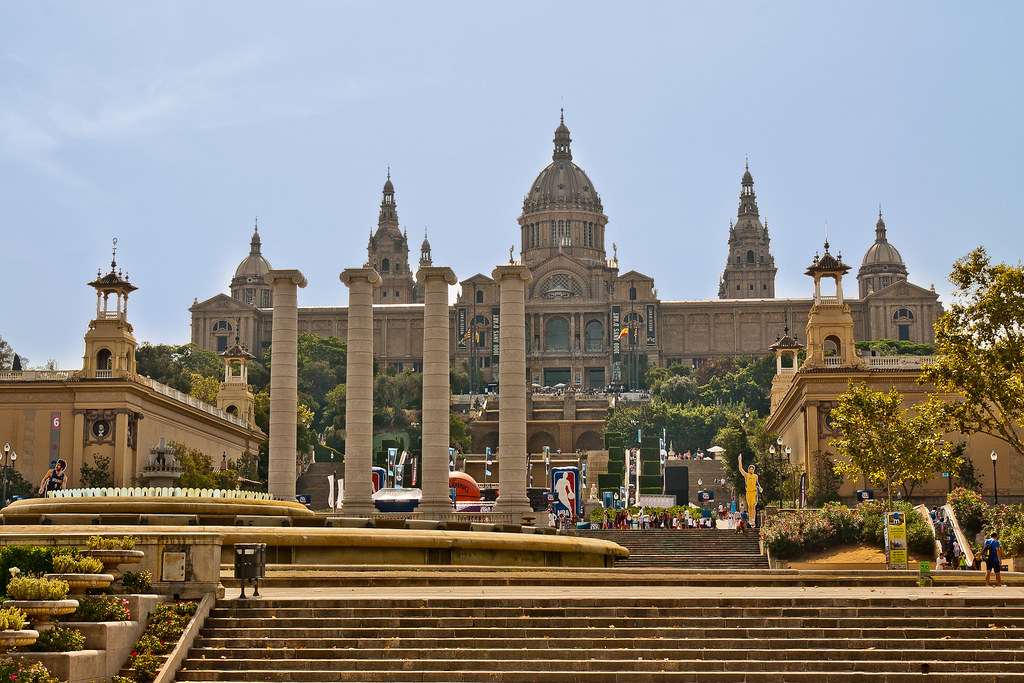
Above: The famous Palau Nacional which was built in 1929 houses the National Art Museum of Catalonia.
Towards the end of my Ryndam contract, Barcelona became our home port (prior to that we were sailing out of Dover). Consequently there were not any tours available from the ship so I had to pay money (shocking!) to take a sightseeing bus around the city. The trip was long but worth it as we visited practically every famous sight in Barcelona! On another visit, I also walked around the famous Gothic Quarter, the centre of the old city of Barcelona.
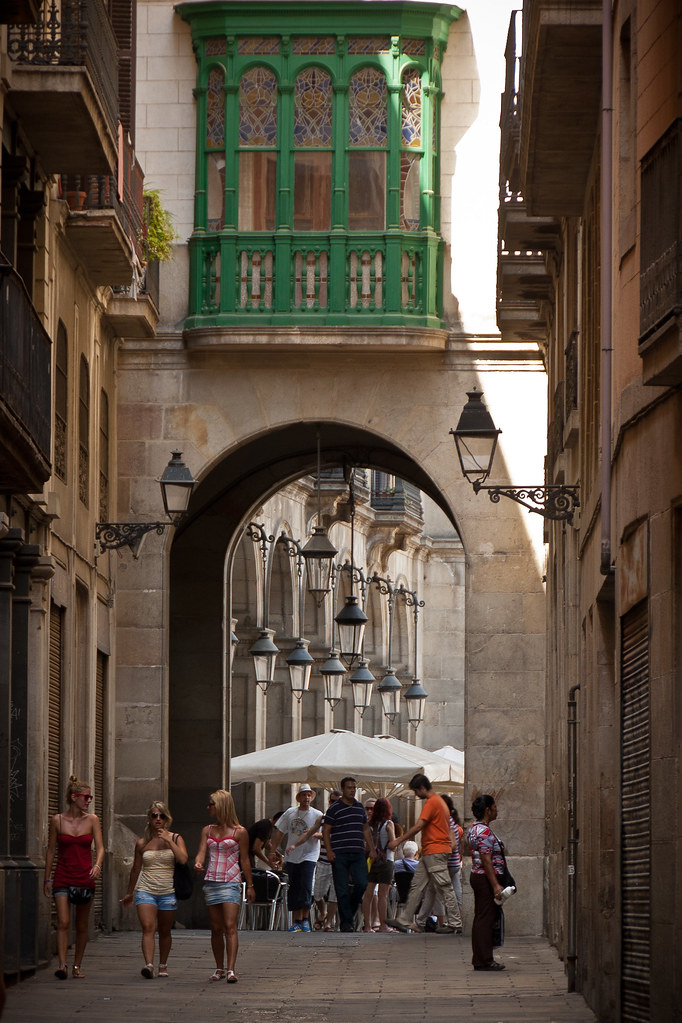
Above: The Gothic Quarter of Barcelona.
Located in the Gothic Quarter is the Cathedral of the Holy Cross and Saint Eulalia, also known as Barcelona Cathedral, constructed throughout the 13th to 15th centuries. A neo-Gothic façade was constructed over the nondescript exterior in the 19th century and the roof is notable for its gargoyles, featuring a wide range of animals, both domestic and mythical.

Above: Barcelona Cathedral.
The Barri Gòtic (Catalan for "Gothic Quarter") has many buildings white date from medieval times, some from as far back as the Roman settlement of Barcelona. There are lots of photogenic buildings and corners:
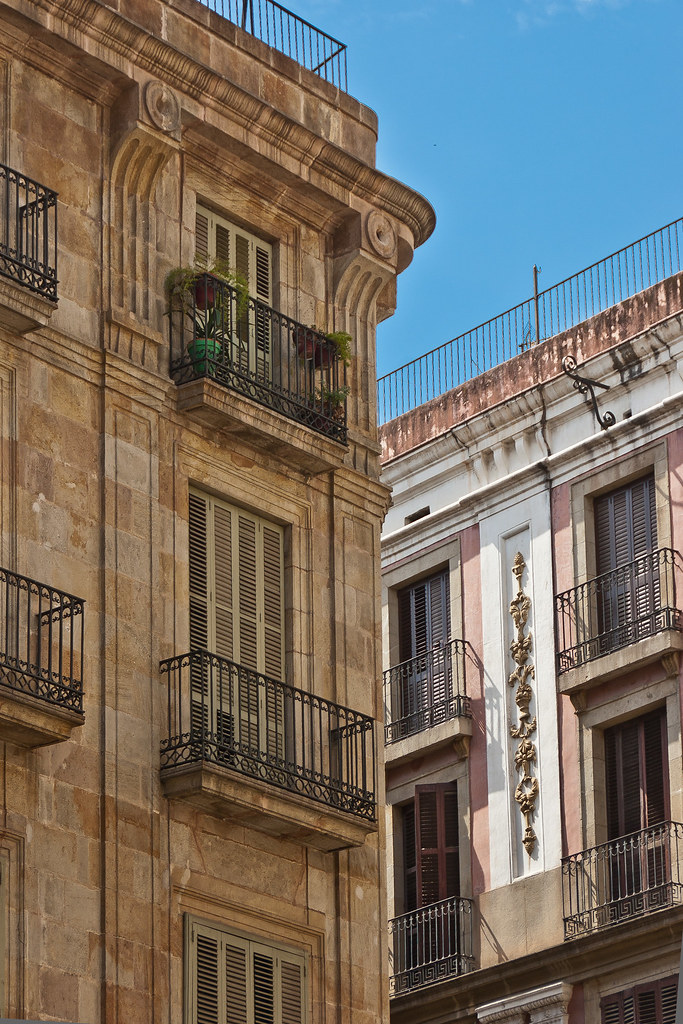
Above: A street corner in the Gothic Quarter.
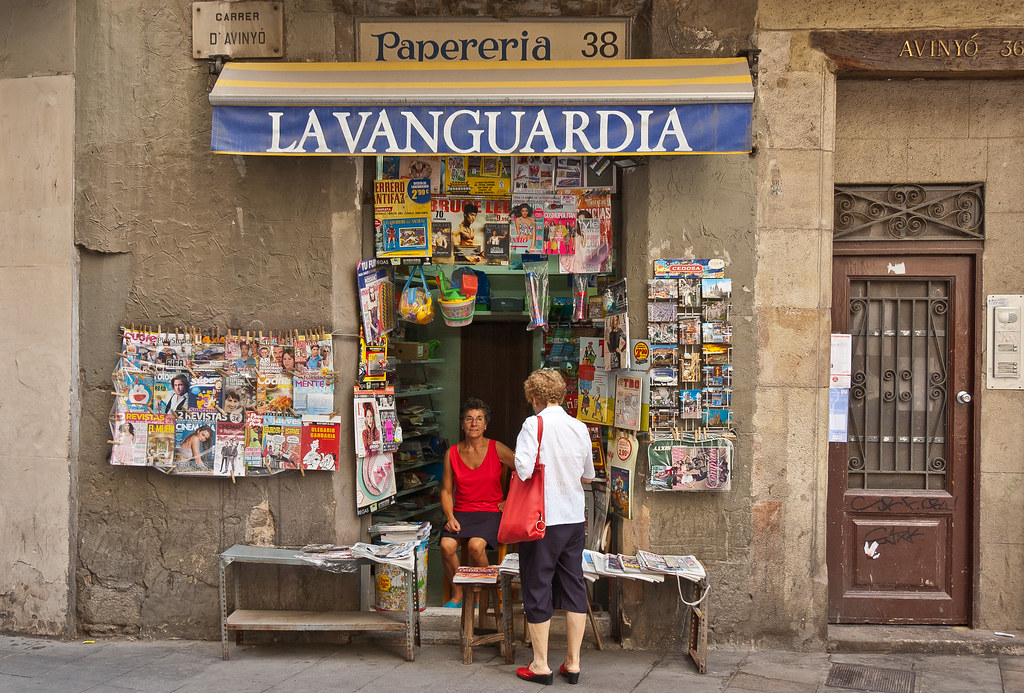
Above: There were lots of tiny shops dotted around the streets!
Particularly renowned buildings in Barcelona include the architectural works of Antoni Gaudí, many of which have been designated UNESCO World Heritage Sites. Catalan modernista architecture (related to the movement known as Art Nouveau in the rest of Europe), developed between 1885 and 1950 and left an important legacy in Barcelona. On my bus tour we drove past a few of these remarkable buildings:
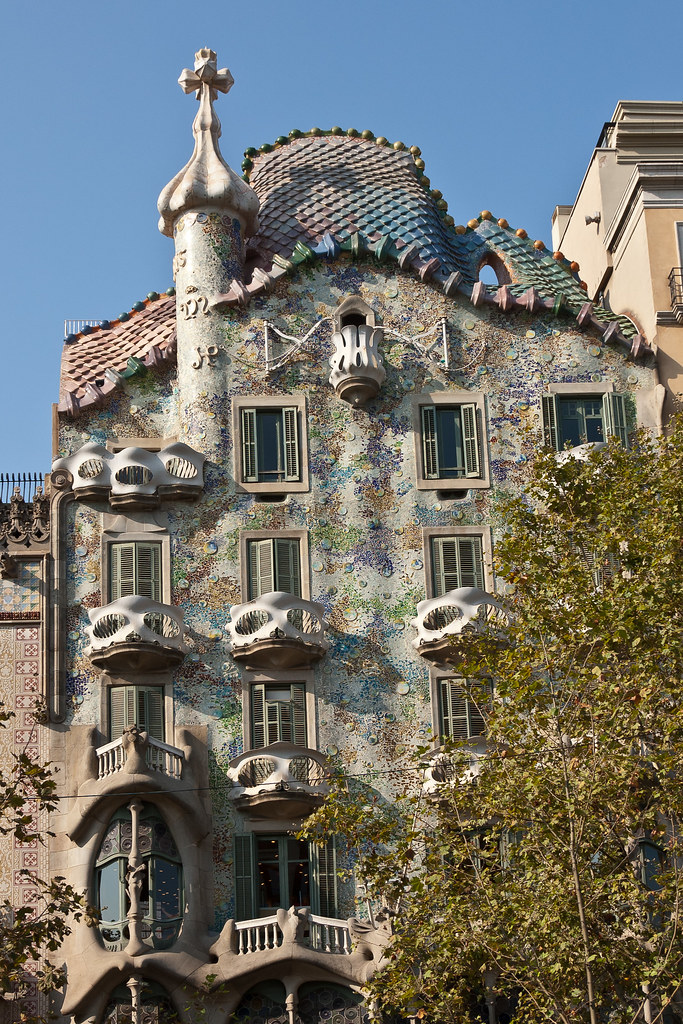
Above: Casa Batlló, one of several remarkable buildings built in the early 20th century.
Gaudí's best-known work is the immense but still unfinished church of the Sagrada Família, which has been under construction since 1882, and is still financed by private donations. Although incomplete, the church is a UNESCO World Heritage Site, and in November 2010 was consecrated and proclaimed a minor basilica by Pope Benedict XVI. Though construction of Sagrada Família had commenced in 1882, Gaudí became involved in 1883, taking over the project and transforming it with his architectural and engineering style—combining Gothic and curvilinear Art Nouveau forms.
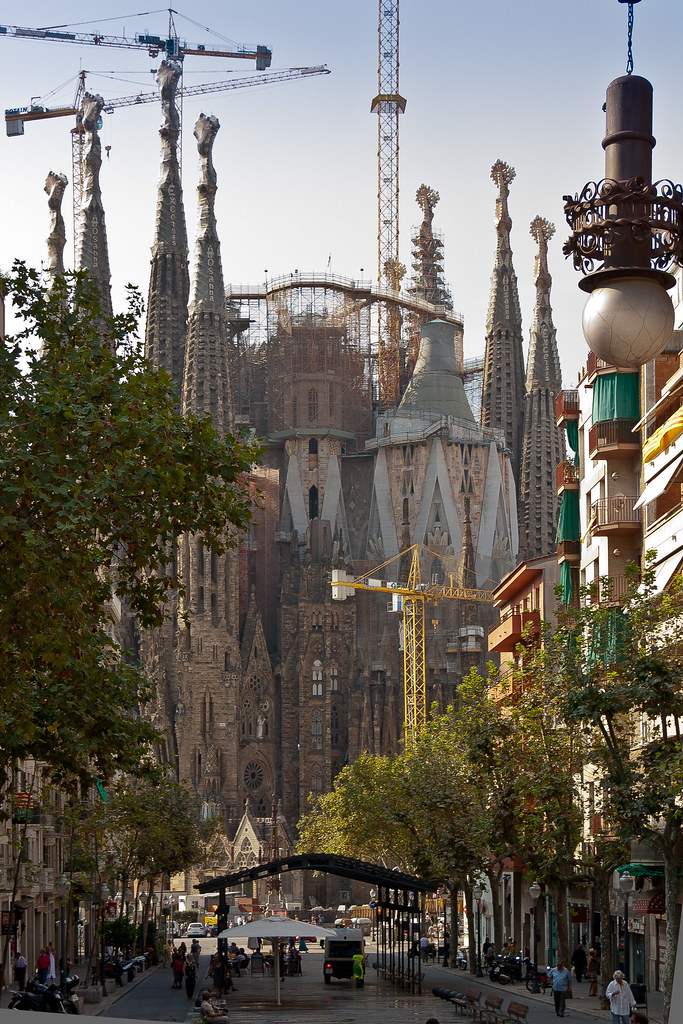
Above: Sagrada Família, viewed through a street with construction cranes prominent.
Gaudí devoted his last years to the project, and at the time of his death in 1926, less than a quarter of the project was complete. Sagrada Família's construction progressed slowly, as it relied on private donations and was interrupted by the Spanish Civil War—only to resume intermittent progress in the 1950s. Construction passed the midpoint in 2010 with some of the project's greatest challenges remaining and an anticipated completion date of 2026—the centennial of Gaudí's death.
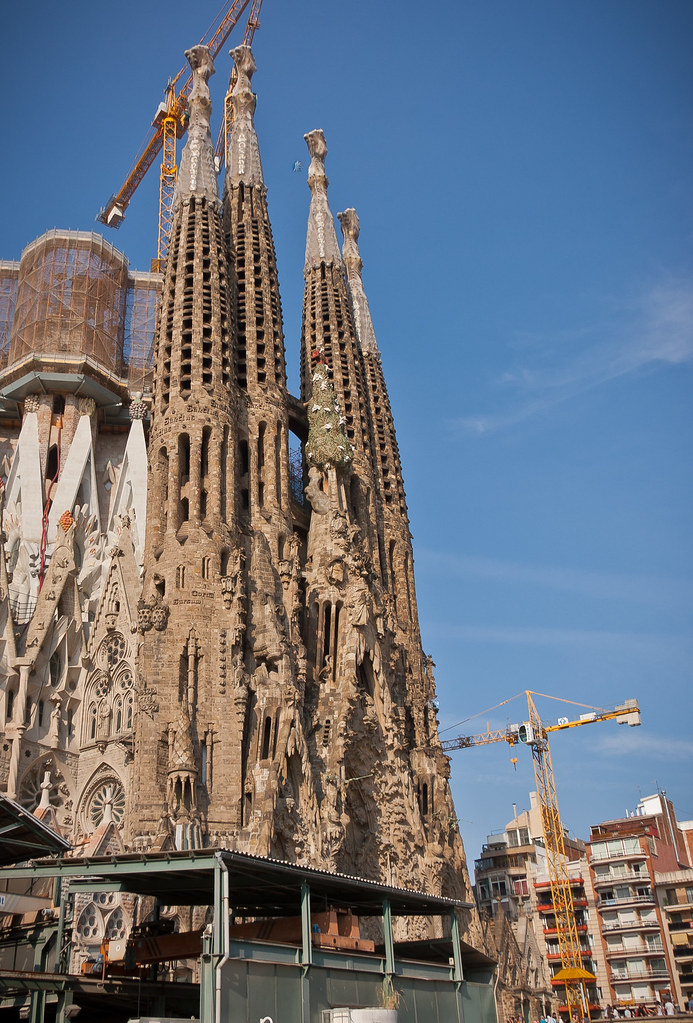
Above: Constructed between 1894 and 1930, the Nativity façade was the first façade to be completed. Dedicated to the birth of Jesus, it is decorated with scenes reminiscent of elements of life.
One of Barcelona's most famous squares is Plaça d'Espanya, built on the occasion of the 1929 International Exhibition, held at the foot of Montjuïc, in the Sants-Montjuïc district. Also nearby is FC Barcelona's Camp Nou, the largest football stadium in Europe with a capacity of 100,000.
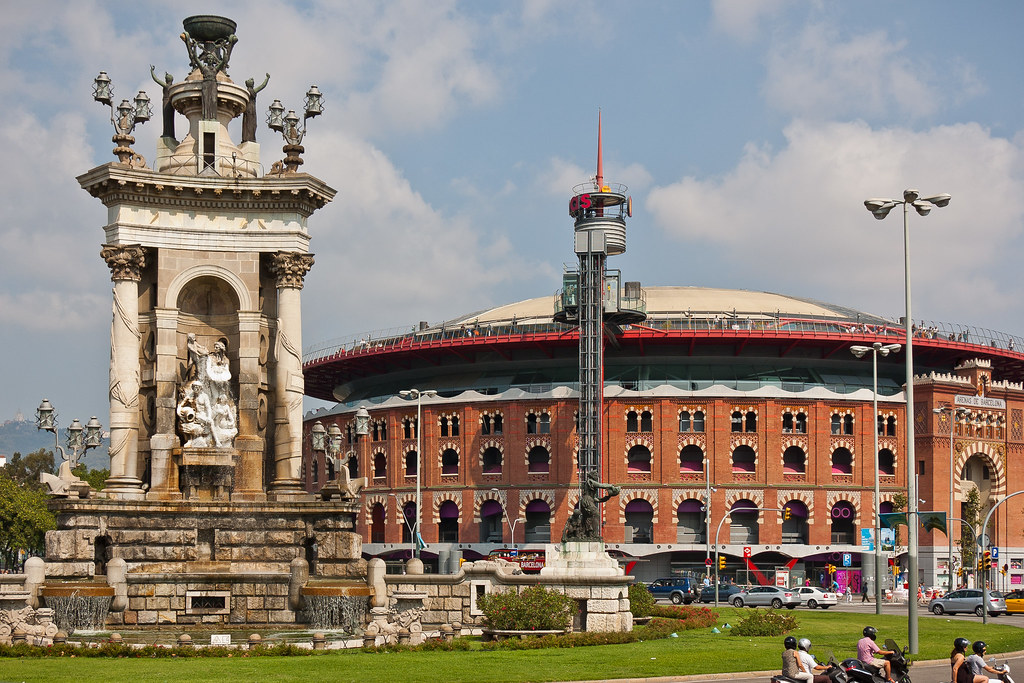
Above: Arenas de Barcelona, a bullring built in 1900 in the Moorish Revival style which has now been converted into a shopping centre.
There is so much to see and do in Barcelona that you would need at least a week to take a substantial amount in. The Ryndam docked near to the Gothic Quarter and just a few hundred metres from us was a Picasso sculpture and the famous Columbus monument.
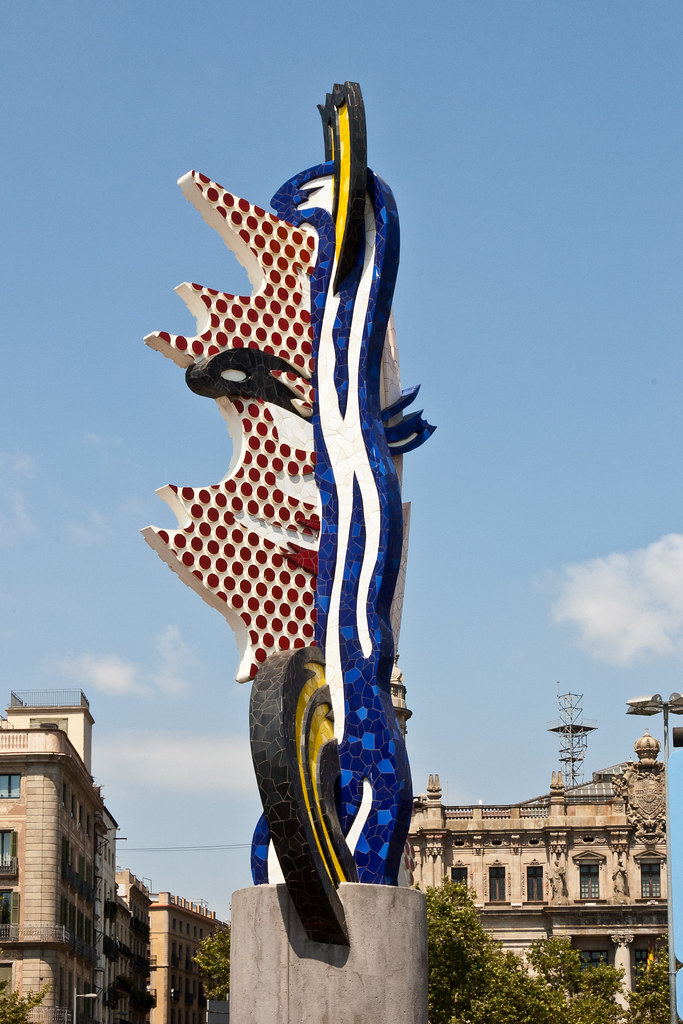
Above: Picasso scultpure.

Above: The Columbus Monument, a 60 meter tall monument to Christopher Columbus constructed for the Exposición Universal de Barcelona (1888) to honour Columbus' first voyage to the Americas.
Thanks for reading and stay tuned for two of the best European destinations to wrap up my Ryndam blogs: Rome and Pompeii!

No comments:
Post a Comment